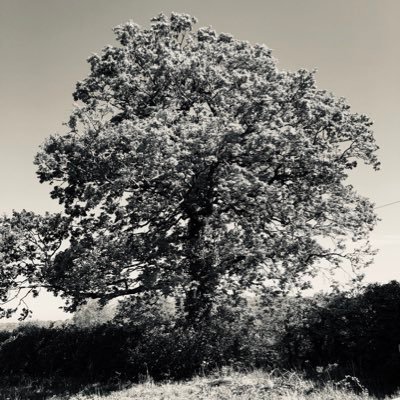
D M Wright
@Mayfieldbirder
Followers
625
Following
47K
Media
3K
Statuses
14K
Natureophilic, a custodian to a treasured piece of Sussex High Weald, Outings Organiser and leader Sussex Ornithological Society!
Joined September 2012
11 on the @SussexOrnitholo walk at @RSPBPagham today in glorious sunshine and a walk first as one (deliberately) went for a swim in the sea. From a walk list of 43: Blackwit; Cattle & Little Egret; Curlew; Greenshank; Med Gull; Sandwich Tern; Turnstone; Wheatear; Whimbrel
0
0
8
Walked from shore & salt marsh to fresh water & reed beds this afternoon (9/8) at @ryeharbour_NR and added Little Ringed Plover to my wader list (others there already seen: Common Sandpiper, Oystercatcher, Lapwing (50+), Redshank). @SussexOrnitholo .@BTO_Sussex
0
1
14
Still in time, just, for #WildWebsWednesday: this gall is a robin’s pincushion or bedeguar gall and is caused by the gall wasp Diplolepsis rosea. Gall Wasps have been busy here as only a short distance from an Oak with galls induced by different gall wasps. @britgalls
0
0
4
Having a laugh at @RSPBDungeness on 3/8/25? Apart from Shoveler other ducks there incl: Gadwall; Garganey; Mallard; Pochard; Teal; Tufted.@KentishPlover
0
0
6
Common Tern common at @RSPBDungeness - these on 2/8 and with signs of summer passing here the middle one has already moulted to non-breeding plumage ready to winter of the coast of Africa. @KentishPlover
0
1
5
Some more galls on one of our Oaks: silk button spangle gall (induced by the asexual generation of the Neuroterus numismalis gall wasp) together with the artichoke or hop gall (induced by the asexual generation of the gall wasp Andricus foecundatrix). @britgalls
0
1
10
A poor and snatched photo before it disappeared from this Fleabane here in the Sussex High Weald and from this I very inexpertly wondered about a Ozyptila crab spider ? @BritishSpiders
1
1
5
The normal-thighed gender - of the small but spectacularly metallic green Oedemera nobilis, here having a pollen break on Fleabane in the Sx High Weald. #WildWebsWednesday
0
0
6
Was casually looking at the glut of acorns on one of our Oak trees and found this knopper gall. induced by one of the Andricus gall wasps (in this case the asexual generation of A. quercuscalicis). #WildWebsWednesday.@britgalls
0
1
5
Argynnis paphia. A male Silver-washed Fritillary that has seen some life at #RSPBBroadwaterWarren pausing to gather nectar from thistles before continuing its busy courtship schedule along a sunny path through the woods. @BcSussex
0
0
6
Pyronia tithonus - may lack ‘wow!’ but agree with Blencowe & Hulme (The Butterflies of Sussex) that it is: “an almost constant and very welcome companion on country walks in July” (this one at #RSPBBroadwaterWarren 25/7). A constant too on my ESx #BigButterflyCount. @BcSussex
0
1
7
Butterflies on my #WCBS today in the ESx High Weald included Speckled Wood (Pararge aegeria) and Green-veined White (Pieris napi) + Gatekeeper; Meadow Brown; Large White with GVW and MB being the most numerous.
0
0
3
Some dark grainy pics whilst dodging rain at #BoughBeech on 19/7: Green & Common Sandpiper and Little Ringed Plover. Also seen: Common Tern; Egyptian Goose; Green WP; Grey Heron; Honey Buzzard; Lapwing; Little Egret; Mandarin Duck; Red Kite.@KentishPlover
0
0
4
In breeding plumage our little introduced Asian duck looks exotic, but out-of-season (and on a rainy day) surprisingly easy to overlook: Mandarin Duck (Aix galericulata) at #BoughBeech on 19/7 - the eclipse male the one with the red beak. @KentishPlover
0
0
3
Tufted Duck (Aythya fuligula) are a fairly common sight but ducklings are not (Tufties are described as a “scarce breeder” in the Sussex Bird Report @SussexOrnitholo ) and I was pleased to find these at @ryeharbour_NR (Castle Water) on 11/7. There were 4 very active ducklings.
0
0
5
“The bisy larke, messager of day” (Chaucer) checking flowers at @ryeharbour_NR for the @sussexornitholo walk. Skylark used to feature in Medieval meals, abundant then now sadly Red-listed of conservation concern more because we are consuming their countryside.
0
0
3
Deilephila elpenor - Elephant Hawkmoth - flying from dusk now and occasionally straying inside, but I eventually persuaded it that Honeysuckle and other sources of nectar were more likely outside. @BcSussex
0
0
9





























